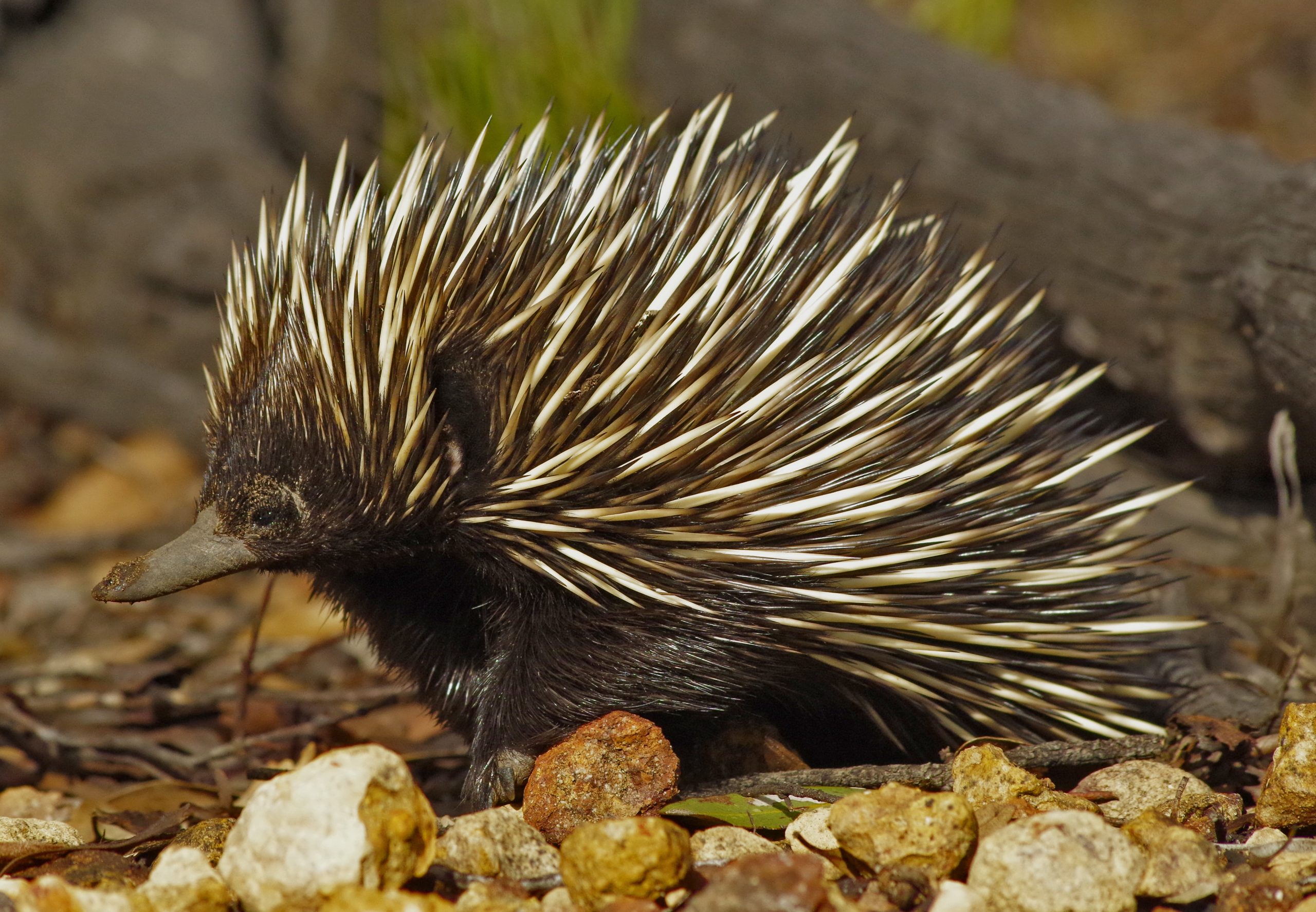Digging Echidnas are Essential Australian Ecosystem Engineers

A team of Australian scientists has found that the short-beaked echidna (Tachyglossus aculeatus) is a keystone species on the continent. In the Journal of Experimental Biology, they report that echidnas mix and move soil around and are essential for the health of the Australian environment.
Echidnas are monotremes, a primitive type of mammal with both reptile-like features (e.g., they lay eggs) and mammal-like features (e.g., they produce milk). These spiny creatures are found throughout Australia. Echidnas forage by digging into ant and termite mounds or underneath fallen trees and probing with their long, hairless snouts. They also dig deep burrows in which they spend most of their resting time.
Their locomotion also combines characteristics of both reptiles and mammals. They neither swing their legs out to the side like a lizard, nor keep them underneath their bodies like most mammals, but rather get around by doing something in-between.
Christofer Clemente, from the University of the Sunshine Coast, along with Christine Cooper of Curtain University, Philip Withers of the University of Western Australia, and Craig Freakley, Surya Singh, and Philip Terrill of the University of Queensland, were interested in how wild echidnas moved around and spent their time.
The team captured echidnas and attached GPS units, accelerometer loggers, and radio transmitters to their backs.
“The field work mostly involved tracking echidnas through the bush at all times of the day using the radio transmitters and then crawling into the tiny dark caves or tree hollows that they like to hide in to get the sensors back,” says Clemente.

The researchers found that the way echidnas move is indeed unique, with lower stride length and stride frequency than reported for similar-sized mammals. Echidnas are not fast animals, but their spiny exterior probably makes up for their lack of speed in protecting them from potential predators. “You don’t need to be able to run quickly if nothing can eat you,” note the researchers.
Clemente and his colleagues compared echidna activity during the spring and summer, when temperatures can differ by about 25°C. In cooler springtime temperatures, the echidnas waddled around at an average of 0.3m/s. But in the hotter summer months, the animals limited their activity to a couple of hours in the morning and instead of walking, they sprinted everywhere at their top speed of 0.6m/s.
“Because they were out for such little time when it was hottest, they had to make the most of it, and were literally sprinting to get to their foraging sites to catch termites before getting back to their burrows,” says Clemente. “It was kind of like that scene from the Vin Diesel movie ‘Riddick’ where they are running to avoid the burning sunshine, only much, much slower and less exciting.”
The team found that echidnas spend, on average, 12% of their time digging.
“We estimate that a single echidna could turn over around 200 cubic meters of dirt a year, meaning it would only take 12 echidnas to move an Olympic-sized swimming pool of dirt every year,” says Clemente. “That’s a lot of dirt for a little animal!”
Clemente and his colleagues believe the echidna’s digging prowess could make a profound contribution to Australia’s environmental health via soil bioturbation, or soil mixing.
“Turning over dirt is key to ecosystem health,” says Clemente. “It mixes the soil, trapping organic material and increasing the drainage ability of the ground.
“Given that Australia has lost so many of its other burrowing animals after the introduction of feral cats and foxes, the echidna may be one the most important bioturbators left.”
Echidnas may not look especially impressive at first glance, but they might be a keystone species in Australian ecosystems, affecting numerous other species through their actions on soil.
Reference: Clemente, C. J., Cooper, C. E., Withers, P. C., Freakley, C., Singh S. and Terrill, P. (2016). The private life of echidnas: using accelerometry and GPS to examine field biomechanics and assess the ecological impact of a widespread, semi-fossorial monotreme. Journal of Experimental Biology 219: 3271-3283. doi: 10.1242/jeb.143867


